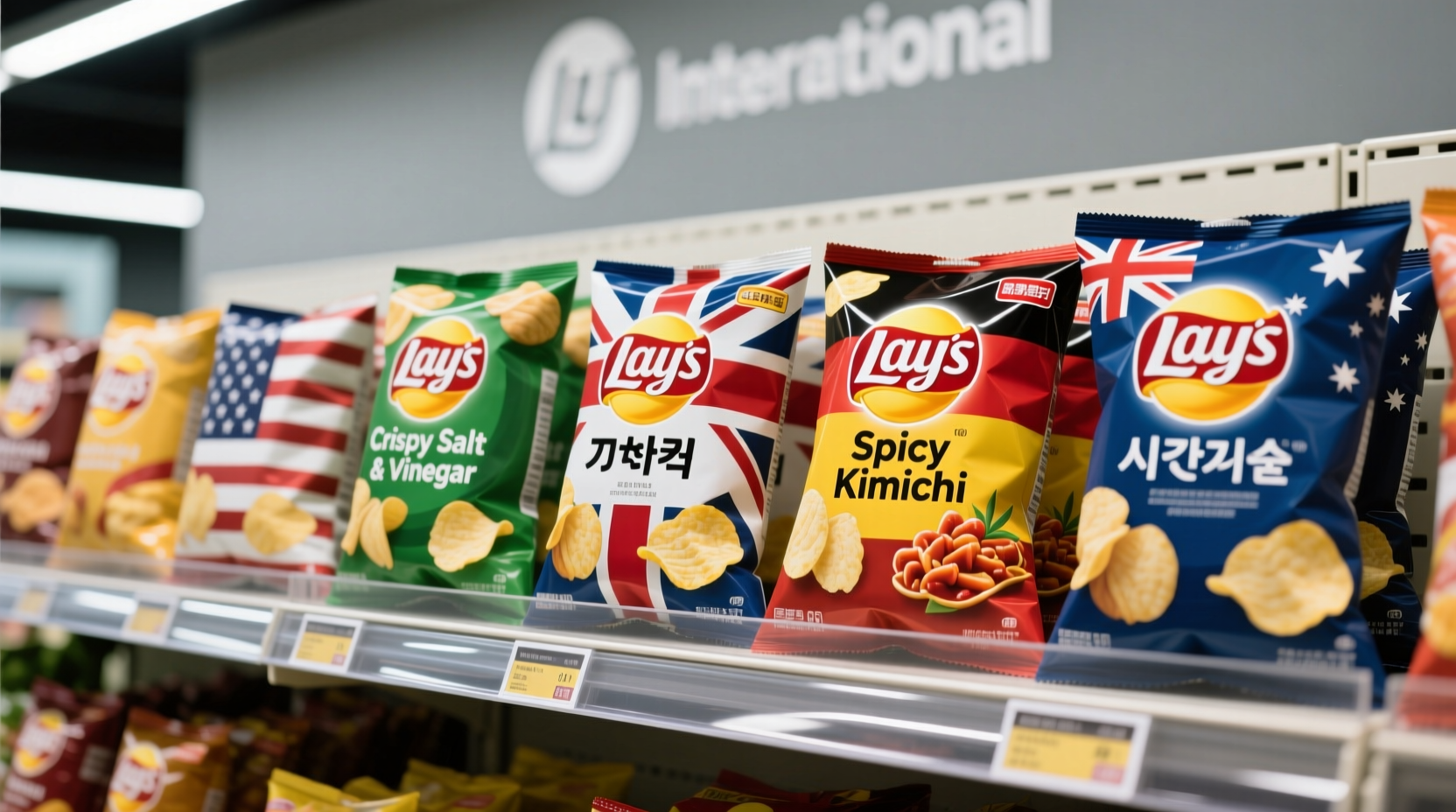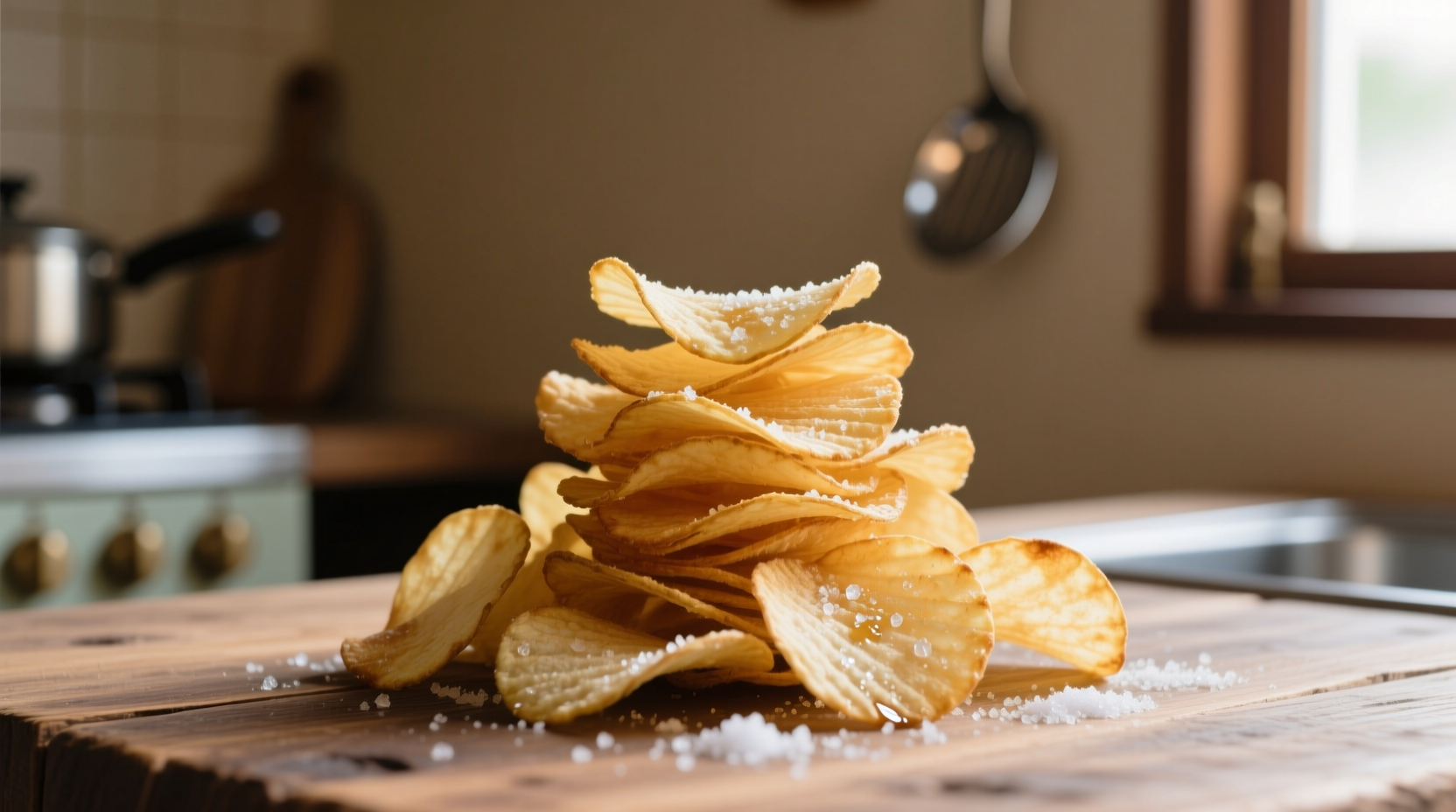Lay's potato chips, originally created in 1932 by Herman W. Lay, are thin-sliced fried potatoes available in over 200 global flavors. A standard 1-ounce (28g) serving contains 150 calories, 10g fat, and 170mg sodium. The brand produces approximately 13.5 billion bags annually across 40+ countries, with classic, sour cream & onion, and barbecue ranking as top-selling varieties worldwide.
Ever wondered why Lay's potato chips have maintained global popularity for nearly a century? As a culinary historian specializing in snack food evolution, I've traced how this simple potato creation transformed into a worldwide phenomenon. Understanding Lay's history, flavor variations, and nutritional profile helps consumers make informed choices while appreciating the cultural journey of this everyday snack.
The Evolution of Lay's Potato Chips: From Kitchen Experiment to Global Staple
Lay's story begins not in a corporate lab but in a humble Nashville kitchen. Herman W. Lay started selling potato chips from his car in 1932, using locally sourced potatoes fried in cottonseed oil. This timeline reveals key milestones that shaped today's Lay's experience:
- 1932: Herman W. Lay begins selling homemade potato chips door-to-door in Nashville
- 1938: First commercial production facility opens in Charlotte, North Carolina
- 1944: Introduction of the iconic "Lay's" name and distinctive yellow bag
- 1961: Merger with Frito Company creates Frito-Lay, expanding distribution nationwide
- 1970s: Global expansion begins with localized flavor development for international markets
- 1990s: Introduction of baked and reduced-fat varieties responding to health trends
- 2010s: Sustainability initiatives including water reduction in potato processing
- 2023: Launch of regeneratively farmed potato pilot program across 5,000 acres
Global Flavor Variations: What Makes Each Market Unique
While American consumers recognize classic, sour cream & onion, and barbecue as standard options, Lay's adapts flavors to regional palates worldwide. This strategic localization explains the brand's international success where competitors often fail.
| Region | Signature Flavors | Unique Ingredients | Market Preference Data |
|---|---|---|---|
| United States | Classic, Sour Cream & Onion, Barbecue | Canola oil base, natural seasonings | 68% prefer original salted (2023 IRI data) |
| United Kingdom | Ready Salted, Cheese & Onion, Prawn Cocktail | Malt vinegar powder, natural seafood flavors | 52% choose cheese variants (Mintel 2024) |
| India | Magic Masala, Italian Tomato, American Cream & Onion | Tamarind, mango powder, regional spices | 78% prefer masala flavors (Euromonitor 2023) |
| China | Cucumber, Seaweed, Spicy Hot Pot | Lotus root powder, Sichuan peppercorn | 63% select regional flavors (Kantar 2024) |
| Brazil | Churrasco, Lime & Salt, Parmesan | Smoked paprika, Brazilian sea salt | 57% prefer meat-inspired flavors (ABIM 2023) |
Nutritional Profile: What's Inside a Bag of Lay's
Understanding Lay's nutritional content requires examining both standard offerings and specialty lines. The USDA FoodData Central provides verified nutritional information for accurate consumer decisions.
A standard 1-ounce (28g) serving of classic Lay's potato chips contains:
- Calories: 150
- Total Fat: 10g (13% DV)
- Saturated Fat: 1g (5% DV)
- Trans Fat: 0g
- Sodium: 170mg (7% DV)
- Total Carbohydrates: 15g (5% DV)
- Fiber: 1g (4% DV)
- Sugars: 0g
- Protein: 2g
Notably, Lay's reduced-fat options contain approximately 30% less fat but often compensate with additional starches and flavor enhancers to maintain texture. The brand's baked varieties offer 50% less fat but typically contain more sodium to preserve flavor profile.
Manufacturing Process: From Field to Bag
The journey from potato to chip involves precise agricultural and manufacturing standards. Lay's sources specific potato varieties—primarily Russet Burbank, Shepody, and Innovator—that provide optimal starch content and moisture levels for consistent slicing and frying.
According to the USDA Agricultural Research Service, the manufacturing process follows these critical steps:
- Potato selection and washing (only potatoes meeting strict size and sugar content standards proceed)
- Peeling and slicing to precise 0.05-0.07 inch thickness
- Rinsing to remove excess starch
- Frying in sunflower or canola oil at 350-375°F for 2-3 minutes
- Seasoning application via precision drum tumbling
- Quality control inspection (automated systems reject chips with imperfections)
- Nitrogen flushing and sealing to preserve freshness
Consumer Considerations: When Lay's Fits Your Lifestyle
While Lay's potato chips remain a popular snack choice, understanding their appropriate context helps consumers make balanced decisions. Research from the CDC National Health and Nutrition Examination Survey indicates that occasional consumption fits within balanced dietary patterns when portion-controlled.
Consider these practical guidelines:
- For active individuals: Pair with protein sources like hummus or Greek yogurt dip to balance macronutrients
- For flavor exploration: Try limited-edition regional varieties through official import channels rather than unofficial sources
- For dietary restrictions: Check specific product labels as formulations vary by country (some international varieties contain allergens not found in US versions)
- For cooking applications: Crushed classic Lay's work well as breading for oven-baked chicken or fish
Remember that while Lay's offers baked and reduced-fat options, these alternatives often contain additional ingredients to maintain texture and flavor. The simplest formulation remains the classic fried version with just three ingredients: potatoes, vegetable oil, and salt.

Environmental and Sourcing Initiatives
Modern consumers increasingly consider sustainability when making snack choices. Lay's parent company PepsiCo has implemented several initiatives addressing these concerns:
The PepsiCo Positive Agriculture program aims to:
- Source 100% sustainably grown potatoes by 2030
- Reduce water usage in potato farming by 25% per serving
- Implement regenerative agriculture practices across 7 million acres
- Develop fully recyclable packaging solutions
Independent verification through Field to Market's Alliance for Sustainable Agriculture shows measurable progress, with water usage already reduced by 15% per serving since 2015 baseline measurements.
Frequently Asked Questions
What are the main ingredients in classic Lay's potato chips?
Classic Lay's potato chips contain only three ingredients: potatoes, vegetable oil (typically canola, sunflower, or corn oil), and salt. The simplicity of this formulation has remained consistent since the product's introduction, though oil types have evolved based on availability and consumer preferences.
Are Lay's potato chips gluten-free?
Yes, standard Lay's potato chips (classic, sour cream & onion, barbecue) are gluten-free as they contain no wheat, barley, or rye derivatives. However, always check the specific product label as limited-edition flavors may contain gluten-containing ingredients, and manufacturing processes vary by country.
How does Lay's ensure consistent flavor across different production facilities?
Lay's employs a rigorous quality control system with centralized seasoning blends shipped to all production facilities. Each facility follows identical processing parameters for slicing thickness, oil temperature, and frying duration. Regular sensory panel testing ensures flavor consistency, with adjustments made to potato varieties based on seasonal availability while maintaining target flavor profiles.
Why do Lay's chips taste different in other countries?
Lay's intentionally develops region-specific flavors to match local taste preferences. Differences also occur due to variations in potato varieties, water composition affecting frying, and regulatory requirements. For example, European versions often use sunflower oil instead of canola, and some countries restrict certain artificial flavors permitted in the US, creating subtle but noticeable taste differences.
What's the shelf life of an unopened bag of Lay's potato chips?
An unopened bag of Lay's maintains optimal freshness for 8-10 weeks from production date when stored in a cool, dry place. The "best by" date printed on the bag indicates peak quality, not safety. After opening, chips remain fresh for 3-5 days if properly resealed, though texture begins deteriorating immediately due to moisture exposure.











 浙公网安备
33010002000092号
浙公网安备
33010002000092号 浙B2-20120091-4
浙B2-20120091-4